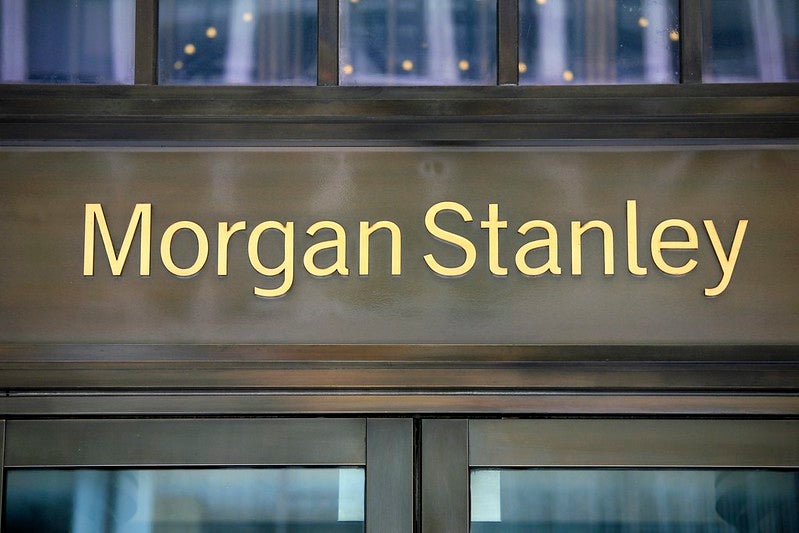Wealth managers offering model portfolio management to the advisory community is not a new thing; it stems largely from RDR. But does it make sense? Alison Ebbage investigates.
For advisors who want to focus on their core activities of tax, financial planning and advice it does. And for wealth managers who have decided to commit to this market, offering models as well as discretionary portfolio management adds scale to their overall wealth management proposition.
Advisors outsourcing their investment management requirements to discretionary fund managers was initially fuelled by the RDR – it placed the focus on advisors charging for advice rather than working on a commission model.
As a result, advisers increasingly looked to outsource their investment management, but did not want to pay for full bespoke discretionary management.DFM firms scrambled to meet them in the middle with the provision of model portfolios on platforms.
Tony Allen, head of the business development team at Vestra Wealth comments: "Although the market has not grown as quickly as expected,in the past six months we have seen a huge uplift in interest, advisors are realising that it makes sense to outsource.I think that 2014 will see this trend really start to take off."
Indeed Allen expects that in the next five years, up to 70% of advisors will have outsourced.
How well do you really know your competitors?
Access the most comprehensive Company Profiles on the market, powered by GlobalData. Save hours of research. Gain competitive edge.

Thank you!
Your download email will arrive shortly
Not ready to buy yet? Download a free sample
We are confident about the unique quality of our Company Profiles. However, we want you to make the most beneficial decision for your business, so we offer a free sample that you can download by submitting the below form
By GlobalDataThe most recent survey by Defaqto found that 45% of advisors are now outsourcing their investment management in some way (though this can often merely involve the use of multi-manager or multi-asset funds). This figure has remained fairly consistent over the last couple of years – we found that 42% were outsourcing at the end of 2011.
This offers an opportunity to wealth managers who are looking to expends distribution of their in-house model portfolios and gain scale. Bigger players include Brewin Dolphin and Quilter Cheviot, both of whom are both investment managers and wealth managers. To firms like this the model portfolio market offers a good overlap- enabling them to be both wealth manager to their own client and investment manager to the advisory market – and build their own business into the bargain.
Stephen Wall, analyst at Aite Group, says: "This effectively the meeting of two solutions. Wealth managers offering model portfolios get to acquire assets without the cost of the interaction and the advice. They still get to focus on managing assets but also add bulk and therefore an economy of scale."
And as the advisor’s core activity is now centred on the advice and the relationship, then it makes sense for them to outsource the non-core activity of managing the money. Outsourcing also frees up time to devote to tax and financial planning. And the significant cost savings many financial advisers are making through outsourcing is enabling them to reinvest in their businesses – to hire more relationship managers, and to invest in better systems.
The compliance burden makes outsourcing even more compelling. Robin Bear, national intermediaries manager at Brewin Dolphin comments: "It has become clear that the compliance burden around due diligence and ongoing management of mandates has become such that keeping this in house only really makes sense for bigger firms now."
Indeed the widely-held view is that good service and good investment performance, can be delivered cost-effectively for clients with smaller pots via a model portfolio as opposed to a true bespoke discretionary portfolio. Accordingly wealth managers looking to offer the advisory market a solid business proposition are offering and range of risk-profiled portfolios as well as a bespoke discretionary option for more sophisticated investors or those with more complex affairs.
Oliver Wallin, an investment director on the multi-manager team at Octopus Investments, says: "Fund management is now a commodity, so outsourcing becomes a natural step. It is an extension of using a collective investment vehicle and it works best in the lower end of the wealth spectrum where there is less than £200,000 to invest – because the end investor benefits from a relatively low-cost investment product."
Proposition
But however good the match of wealth manager and advisors’ needs, this is not a market that can be entered into half-heartedly. For many advisors letting go of the investment management side of things is hard to do, no matter how strong the business case. In addition there is the control element, which has acted as a brake on the development of this model. Effort therefore is required to deliver a real value-added proposition and service to advisors.
Allen comments: "We first identified this market before the RDR in 2009 and decided that to have a chance of playing within it- that a real effort was to be made to do it properly. We decided that to gain a chance of real traction with advisors that we would need to be custody neutral. We now run with over 14 custody platforms and that gives the advisors more choice and control."
"We also offer the ability to white label our models. Again this gives advisors more control and if we white label then we also sit on the advisor’s investment advisory committee too."
And Bear adds: "Advisor firms that do go down the outsourcing route need robust proposition that offer consistency and visibility to advisors. They also want a clear charging structure."
He thinks that passive low-cost investments, like ETFs, are gaining in popularity and that effectively the model portfolio proposition has become a low-cost asset allocation vehicle into passive investments. "It’s the provision of a steady pair of hands to do the asset allocation but into passive vehicles. We are also starting to see more investment into the direct equity model."
Lee Robertson, ceoat Investment Quorum agrees: "Model portfolios as a pure passive play are very popular- the discretionary manager adds value by picking the right fund managers within the defined risk profile. It’s a growing trend."
However one of the challenges with a direct equity model is the range of direct investments that might or might not be on offer from the various platforms. In this context then it makes sense to give the advisor back some of the control over which platform to use and where to custody assets – depending on what they want to invest in on the client’s behalf.
Risk profiling is another issue. Most advisors use their own risk profiling models and indeed, the regulatory onus is still on the advisor in this respect. But having additional risk rating capabilities can add value. At Quilter Cheviot, for example, advisors are offered the use of independent third-party risk assessments. This provides a cost effective way of ensuring the consistency of risk measurements across a client base because the independent analysis of an overall risk level of a model portfolio is determined by the third party and that can then be matched more closely with individual client suitability.
For example, an adviser may decide that a high risk equity portfolio is still the most appropriate investment strategy for their cautious client if the client also has a large amount of low-risk assets held outside of the portfolio.
Allen comments: "Our models are all measured on volatility not to benchmarks- this allows advisor to plug results in to their client’s risk profiles and find the best match. It is important to say that the advisors are still responsible for the risk assessment and due diligence."
Bespoke
However popular the model portfolio option is, for some clients, generally in the £200,000 or above bracket, the true discretionary route makes more sense. This is not least because the more assets an investor has then the more complex the tax planning becomes. In this instance the advisor needs to have a high degree of flexibility and service so as to be able to provide the very best in tax planning for the end client.
Bear comments: "Higher up the scale, the tax element becomes the key determinant of whether to have a model or a true discretionary portfolio. And a bespoke model is very often taking place within a SIPP context and where the end investor is nearing retirement and wants to de-risk the portfolio, or is already in drawdown and wants to manage his or her assets accordingly."
So what of the future? Will larger advisors feel compelled to outsource as comfort levels with this business model grow?
Wallin comments: "Relinquishing control is a huge issue and comfort levels need to rise significantly before this becomes a strong trend as such."
What might be more likely to happen is that some wealth managers currently active in this market apply a more structured segmentation and decide to move further up the value chain because the volumes offered by the advisory business are simply not profitable enough.
Robertson comments: "We provide models to our own clients but we are a boutique- if we want to offer models externally then we need a critical mass to make it worth our while to scale up internally. At the moment this makes little sense and we have decided to remain focused on our own clients in the current market."







